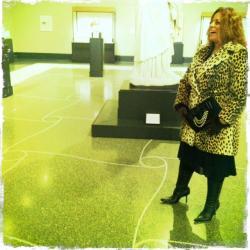What makes you feel connected to life on earth?
An especially considerate friend just gifted me with an exquisite trio of flesh-eating plants, from California Carnivores. Yes, Venus Fly Traps would be in this general category, and this world-class supplier based in Northern Cal carries an array of those childhood show-and-tell favorites.
But I am now the custodian of three plants from the genus which California Carnivore Founder Peter D’Amato describes as carnivorous plant royalty: the Nepenthes. My new charges are N.Spatulata x Boscuiana, N.Spatulata x Fursca, and N.Ventricosa x Sanguinea.
Their genus name describes the plant’s characteristic pitcher-trap, which is filled with enzyme-rich digestive fluid where unlucky insects become the soup du jour. The pitcher is shaped sort of like a cup, and the ancient Greek “nepenthes” was a mythological elixir which would erase all sorrow. We’re still searching for the latter. But meanwhile, these plants are an intriguing and elegant diversion.
The sunny, yet moist ridges and forests of Sumatra, Indonesia, Borneo are the natural home of most Nepenthes, so cultivating them in dry, oft-scorching Burbank throws down the gauntlet in terms of plant parenting. For instance, they need bright sun, but I’ve literally crisped a few in the angled sun of early morning or late afternoon. They need to be kept damp, but not left standing in saucers of water that’s too deep, because that will rot their roots. And so on.
But I can’t resist the challenge. The traps are dappled, swelling, freckled and speckled, descending from twisting, twining, serpent-like stems. They start off tiny, and fringed, looking almost like a Venus Fly Trap. Then the two hair rows of spines elongate, and the Nepenthes-cup begins to take shape, vertical, deep and bell-like versus flat, shallow and clamshell. The traps of some Nepenthes grow large enough to engorge far more than a random skeeter larva or gnat. Many would easily accommodate a liter-bottle of the ultra-filtered water they require, maybe two.
Here, we must mention naturalist Sir. David Attenborough, for whom the most recently named species of Nepenthes has been named, N. Attenboroughii. (The mellifluous BBC host did not discover the plant, but merely inspired its name, like the Richard M. Nixon Rose, etc.) Found on Mt. Victoria in the Philippines, this species may in fact be the largest in the world, possibly outsized only by N. Rajah. Early reports trumpeted wildly that N.Attenboroughii was a “rat-eating” plant, apropos since Attenborough identifies rats as the only creatures on earth which he truly detests (the result of using public toilets in India). But while a rodent could easily fit into the full-grown trap, there is no evidence that the plant dines on anything but the usual insect fare.
And right on cue, or Kew, Sir David has just launched his newest BBC mini-series, a 3-part BBC program called “Kingdom of Plants 3D”. The series was filmed at Royal Botanic Gardens at Kew, the iconic institution which houses 90% of all known plant species, including 2 billion seeds of 30,000 species of wild plants.
The mission, incidentally, of the RBG@Kew is to reduce the extent and impact of climate change, and rescue species and habitats from destruction. You can do this, for instance, through the “Adopt a Seed” Millennium Seed Bank program at kew.org.
Perhaps you’re not so fascinated with Linnean binomial nomenclature. Still, it’s important to know that Nepenthes Rigifolia is on the Critically Endangered list, according to the International Union for Conservation of Nature. The IUCN reports that only two individuals of this species are currently found in the wild today. Oh, “Critically Endangered” is a 5 on a scale of 7, in terms of measurement. After that: (6) “Extinct in the Wild”; and then, simply, and finally, (7) “Extinct”.
Meanwhile, I hover anxiously over my three new arrivals.
–Victoria Thomas



